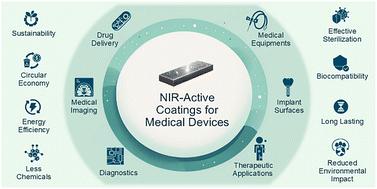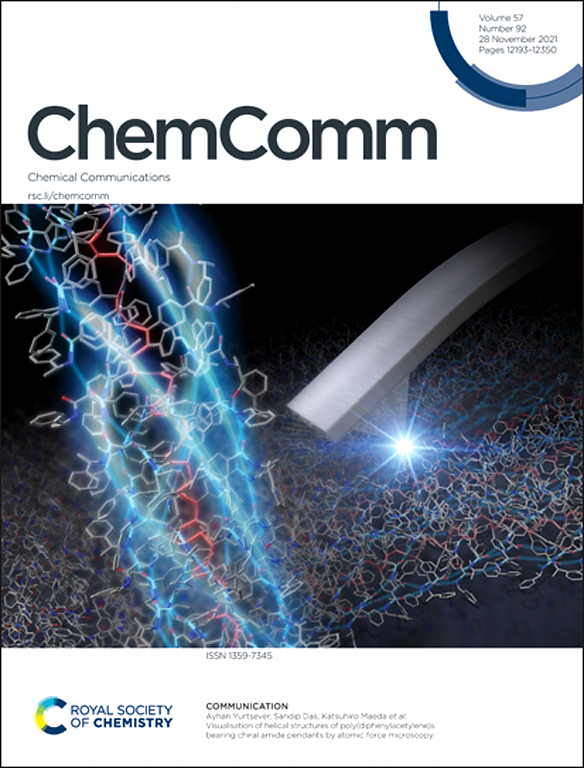新一代医疗设备nir活性涂层的创新和可持续方法。
IF 4.2
2区 化学
Q2 CHEMISTRY, MULTIDISCIPLINARY
引用次数: 0
摘要
智能近红外涂料旨在反射或吸收近红外(NIR)光,已成为医疗保健和生物医学领域的一种变革性和可持续的解决方案。由于波长较长,可以减少散射和吸收,与可见光相比,近红外光对生物组织的穿透能力更强,这使得基于近红外光的技术在治疗和诊断方面都非常有用。近红外涂层可用于非侵入性成像,以监测和控制植入式装置的性能,包括药物释放,生物膜解体和感染预防,与传统的药物给药,灭菌或抗生素策略相比,具有许多优势。在这篇综述中,我们探讨了在医疗器械中使用近红外涂层的主要优势,强调了它们对设备效率、使用寿命和性能的影响,以及它们在减少医疗器械对环境的影响方面的作用。通过最近的例子,我们确定了使用近红外涂层可以继续推动医疗设备关键性能特征改进的途径,同时支持循环经济原则,突出了该技术家族的关键挑战和机遇。本文章由计算机程序翻译,如有差异,请以英文原文为准。

Innovative and sustainable approaches to NIR-active coatings for next-generation medical devices
Designed to reflect or absorb near-infrared (NIR) light, smart NIR coatings have emerged as a transformative and sustainable solution in healthcare and biomedical fields. As longer wavelength allow for reduced scattering and absorption, NIR light exhibits superior penetration through biological tissues when compared to visible light, making NIR-based technologies extremely useful for both therapeutics and diagnostics. NIR coatings can be utilized for non-invasive imaging to monitor and control the performance of implantable devices, including drug release, biofilm disintegration and infection prevention, providing several advantages over the traditional drug administration, sterilization or antibiotic strategies. In this review, we explore key advantages of using NIR coatings in medical devices, highlighting the impact of their use on device efficiency, operational lifespan and performance, and their role in reducing the environmental impact of medical devices. Using recent examples, we identify pathways by which the use of NIR coatings can continue to drive the improvements in the key performance characteristics of medical devices while supporting the principles of circular economy, highlighting critical challenges and opportunities for this family of technologies.
求助全文
通过发布文献求助,成功后即可免费获取论文全文。
去求助
来源期刊

Chemical Communications
化学-化学综合
CiteScore
8.60
自引率
4.10%
发文量
2705
审稿时长
1.4 months
期刊介绍:
ChemComm (Chemical Communications) is renowned as the fastest publisher of articles providing information on new avenues of research, drawn from all the world''s major areas of chemical research.
 求助内容:
求助内容: 应助结果提醒方式:
应助结果提醒方式:


